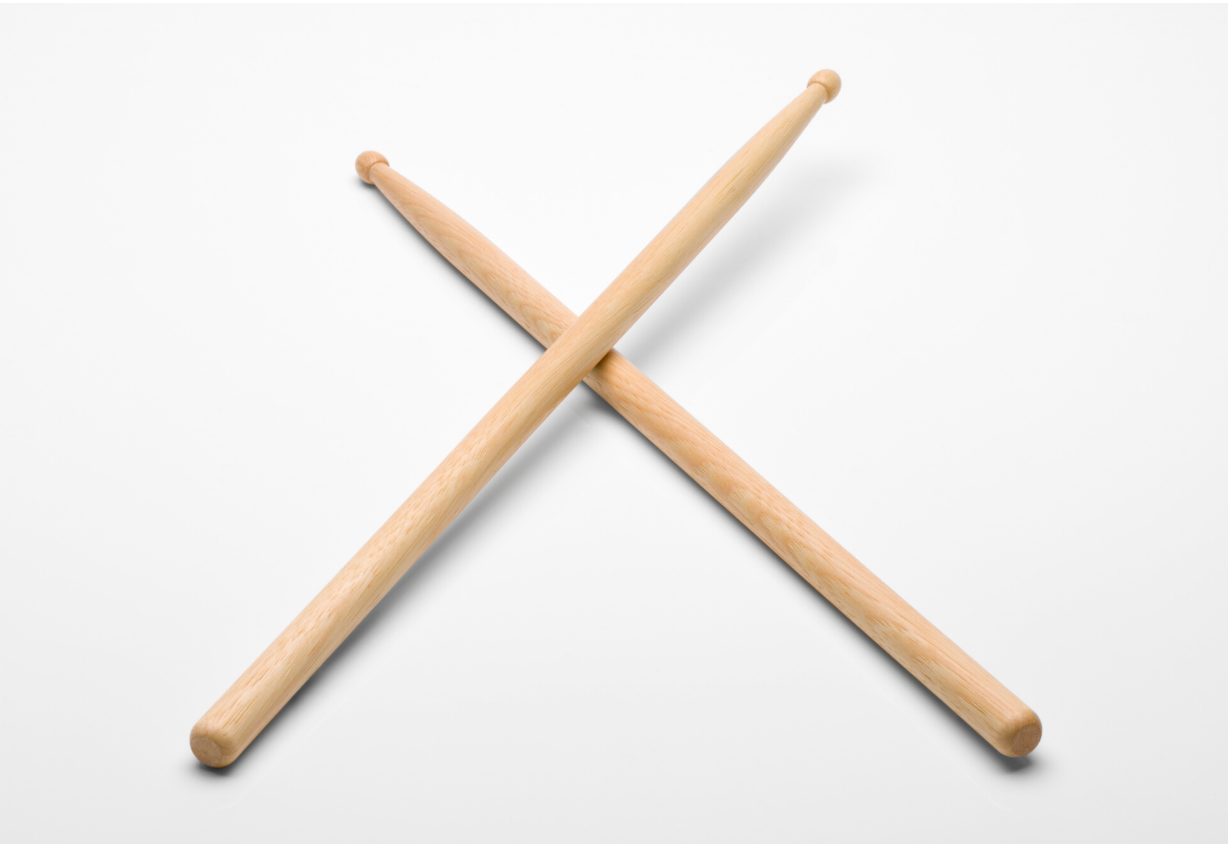One of the great things about playing tenor drums is we get to use the exact same technique for both of our hands. We don’t have to learn two completely different ways to manipulate the drumsticks like traditional-grip snare drummers do. By focusing on just a few techniques, we can get great results. Let’s dive into matched-grip drumming fundamentals.
Stay Relaxed
First things first, you always need to be relaxed. The moment you tense up, bad things will happen. Usually, drummers tense up when trying to play really fast or difficult rudiments, trying to force out the notes. This is the exact opposite of what you want to do and can lead to wrist damage.
When you find yourself getting tense in the shoulders (tricky around pattern) or hands (playing fast notes), take a long, deep breath.
This will force your body to relax and keep the blood flowing properly. At this point, you should probably bring the tempo down and work back up to that speed. Much more on that in this post.
Arm Placement
With your arms, shoulders, and hands relaxed and down at your sides, bend at the elbow and bring your hands up to the drum. Your elbows should be a couple inches from your body (not too far out but not touching your body either).
Your forearms should be angled slightly downward. The sticks should be as close to parallel to the ground (flat) as possible. Depending on what types of sticks or mallets you are using, you might need to angle the sticks down a little to get over the rims.
When I marched, we predominantly used mallets with large heads on them, so we could keep the mallets pretty much flat and still get over the rims.
Gripping the Sticks
As far as your hands go, you want the back of your hand at a 45 degree angle, pointing to the opposite shoulder.
Avoid having a “French” grip with your hands being too vertical (a common habit with new tenor drummers). At the same time, avoid having a “German” grip with your hands completely flat. (If you don’t know what I’m talking about, you can read about both of those HERE).
Both the French and German grips will affect your stick movement and inhibit your ability to smoothly move around the drums. Shoot for somewhere in between, say, a Belgian grip? Just kidding!
Basic Stroke, Knocking on the Door
For the basic stroke, you will use the same motion as knocking on a door, a very relaxed rotation of the wrist. Take a moment to put your hand in the air. Act as if you are knocking on an imaginary door.
Get used to how this feels. Everything is initiated from the wrist rotation. Notice how your hand naturally stays at a slight angle. If attempting to have all of your knuckles hit the door, your elbow must stick out away from your body. We want to avoid this!

In addition, notice that all of your fingers stay against your palm. This is one of the main things that I want you to focus on. New drummers are quick to let those back fingers come off as they play, this is not ideal.
Now, let’s get the sticks back in your hands. Using the same, relaxed “knocking on the door” motion, hit the drum a few times. Focus on the back three fingers and how they feel against the stick.
Also, take a look at the path of the stick. You should have a very fluid up and down motion. Is the stick going straight up and down? Or do you have a “slice” where the stick travels at an angle? This will be especially important in the future when we are avoiding rims while playing “sweeps” or “scrapes”.
Compare Your Left Hand to Your Right
Unless you are left-handed, your right hand will probably be a lot more comfortable doing this than your left hand. Your left hand will most likely be more tense with a smaller range of motion.
Often, what I like to do is play “double-stops”, where both hands play together, hitting the drum at the same time. This allows you to easily compare your left hand to your right.
Are they playing at the same heights? Is your left hand as smooth as your right? What about the back fingers? Are the fingers on your left hand coming off the stick?
Strive to have both hands to feel exactly the same. This might require much more focus on your left hand. I recommend spending a decent amount of time just playing with your left hand or playing exercises “off the left” (starting with your left hand). You are only as good as your left hand!
Focus on the Basics and be a Perfectionist
Always be your own worst critic and never rush through something just to get to the “harder” stuff. Complete mastery of the fundamentals is the best way to be able to play the more difficult rudiments. They are all built off of one another!
Hey, thanks for reading! If you enjoyed this post on Matched-Grip Fundamentals, be sure to check out my other lessons.
If you like what you see and want to help out financially, consider contributing to my PATREON ACCOUNT.
Want to stay in touch? Fill out the form below and never miss a beat!

